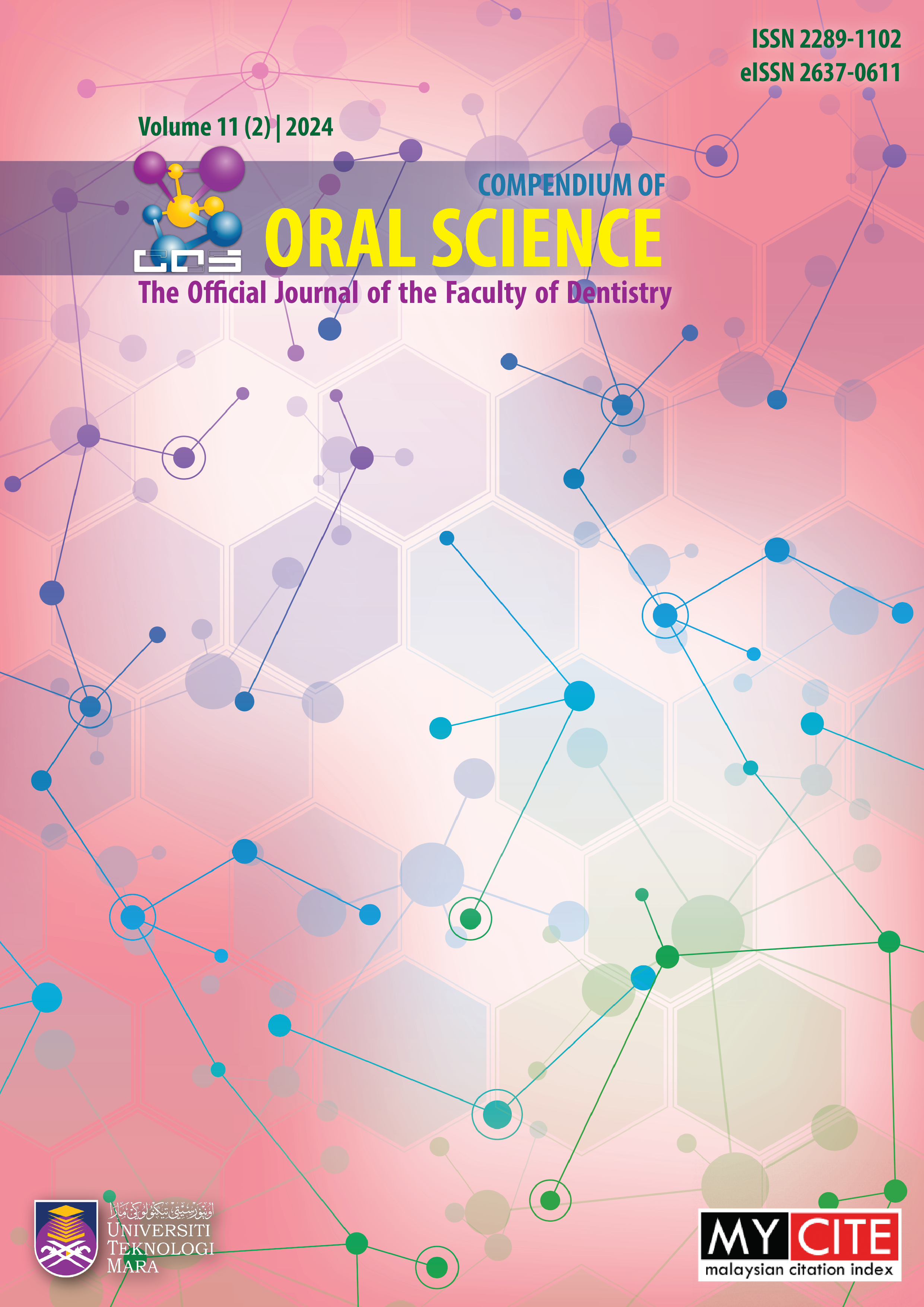A Case Report of Management of Intruded Mandibular Incisors in a Young Child with Epilepsy
DOI:
https://doi.org/10.24191/cos.v11i2.27508Keywords:
dental trauma, intrusion, management, seizure, epilepsyAbstract
The most common dental trauma during early childhood is intrusive luxation, which results in the displacement of the tooth into its alveolus. It is a severe form of dental trauma that can cause damage to the periodontal ligament, pulp, and alveolar bone. The International Association of Dental Traumatology recommends either extraction or spontaneous re-eruption of the intruded primary tooth, depending on the severity of the intrusion. This case report provides a brief insight into the management of intruded mandibular primary incisors caused by an epileptic attack in a 4-year-old boy diagnosed with refractory spastic cerebral palsy. After 6 weeks of the traumatic incident, spontaneous eruption of the intruded teeth was observed. However, the teeth were found to be mobile after 9 months of clinical and radiographic monitoring, necessitating extraction. Conservative management including waiting for spontaneous eruption with close monitoring is a treatment option for intrusive primary teeth in young children.
Downloads
Published
How to Cite
Issue
Section
License
Copyright (c) 2024 Compendium of Oral Science

This work is licensed under a Creative Commons Attribution-NonCommercial 4.0 International License.
Materials contained in the journal may be reproduced for educational purposes provided that both the author(s) and the journal are appropriately recognised; otherwise duplication is not permitted. No articles, reports, or portions there of may be translated into other languages, published in books, journals, magazines, or any other print form without written permission from the authors and from the journal.
Disclaimer: The statements, opinions and data expressed in the articles and reports herein are those of the author(s) and not of the publisher and the editor(s). The publisher and the editor(s) disclaim responsibility for any injury to persons or property resulting from any schemes, methods, instructions or ideas referred to in the content.















